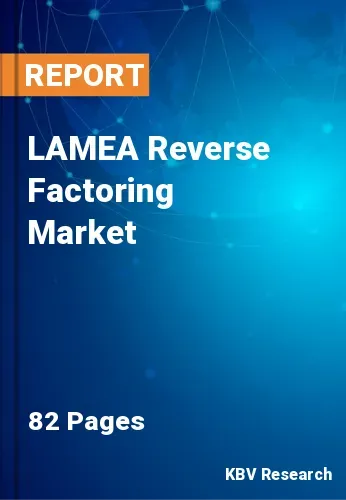The Latin America, Middle East and Africa Reverse Factoring Market would witness market growth of 12.0% CAGR during the forecast period (2023-2029).
Due to notable macro-level barriers like unstable capital availability and poor financial services, as well as remarkable micro-level barriers such as a lack of collateral and asymmetric knowledge, these problems are frequently encountered in developing nations. Reverse factoring minimizes default, suppliers' credit, or payment risks associated with financial institutions and boosts security to solve these problems, enabling SMEs to complete bigger orders and boosting the need for a variety of factoring services. Additionally, SCF streamlines the flow of working capital throughout the whole supply chain and improves relationships between buyers and suppliers, which spurs the expansion of the market.
Governments, associations, and major participants in the sector are being encouraged to increase the accessibility of SCF services globally as a result of the growing public knowledge of the advantages of reverse factoring services.
The shifting of firms' attention from various industries to bad debt evasion as well as business growth with improved financial stability, can be credited with the expansion of the reverse factoring demand in Latin America. Many Latin American nations, including Peru, Chile, Argentina, and Brazil, are seeing increased demand for reverse factoring services across all industries. Additionally, domestic and international reverse factoring services provide exporters with simple access to capital. A good market outlook for various financing options is being created by the region's expanding F&B business and staffing agencies. This, in turn, ensures the advancement of the market throughout the region.
The Brazil market dominated the LAMEA Reverse Factoring Market by Country in 2022 and would continue to be a dominant market till 2029; thereby, achieving a market value of $15 Billion by 2029. The Argentina market is experiencing a CAGR of 12.6% during (2023 - 2029). Additionally, The UAE market would showcase a CAGR of 11.7% during (2023 - 2029).
Based on Category, the market is segmented into Domestic and International. Based on Financial Institution, the market is segmented into Banks and Non-banking Financial Institutions. Based on End-use, the market is segmented into Manufacturing, Transport & Logistics, Information Technology, Healthcare, Construction and Others. Based on countries, the market is segmented into Brazil, Argentina, UAE, Saudi Arabia, South Africa, Nigeria, and Rest of LAMEA.
Free Valuable Insights: The Worldwide Reverse Factoring Market is Projected to reach USD 1041.5 Billion by 2029, at a CAGR of 11.3%
The market research report covers the analysis of key stake holders of the market. Key companies profiled in the report include HSBC Holdings plc, Barclays PLC, JPMorgan Chase & Co., Banco Bilbao Vizcaya Argentaria SA, Deutsche Factoring Bank GmbH & Co. KG (Deutsche Leasing), Drip Capital Inc., PrimeRevenue, Inc., Trade Finance Global, Tradewind GmbH, and Credit Suisse Group AG.
By Category
By Financial Institution
By End-use
By Country

Our team of dedicated experts can provide you with attractive expansion opportunities for your business.

